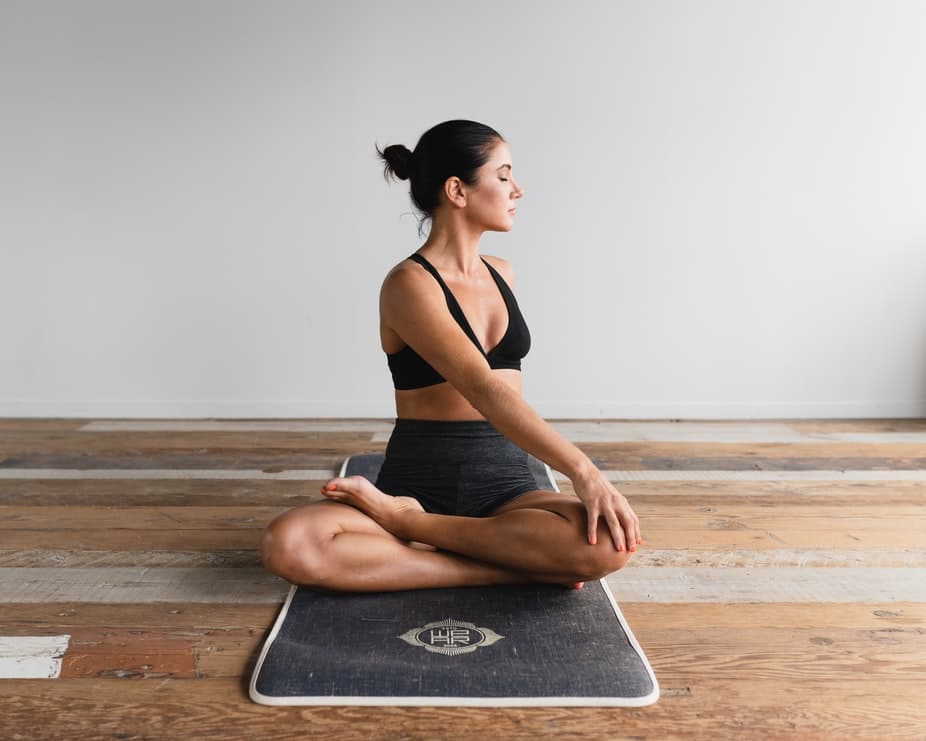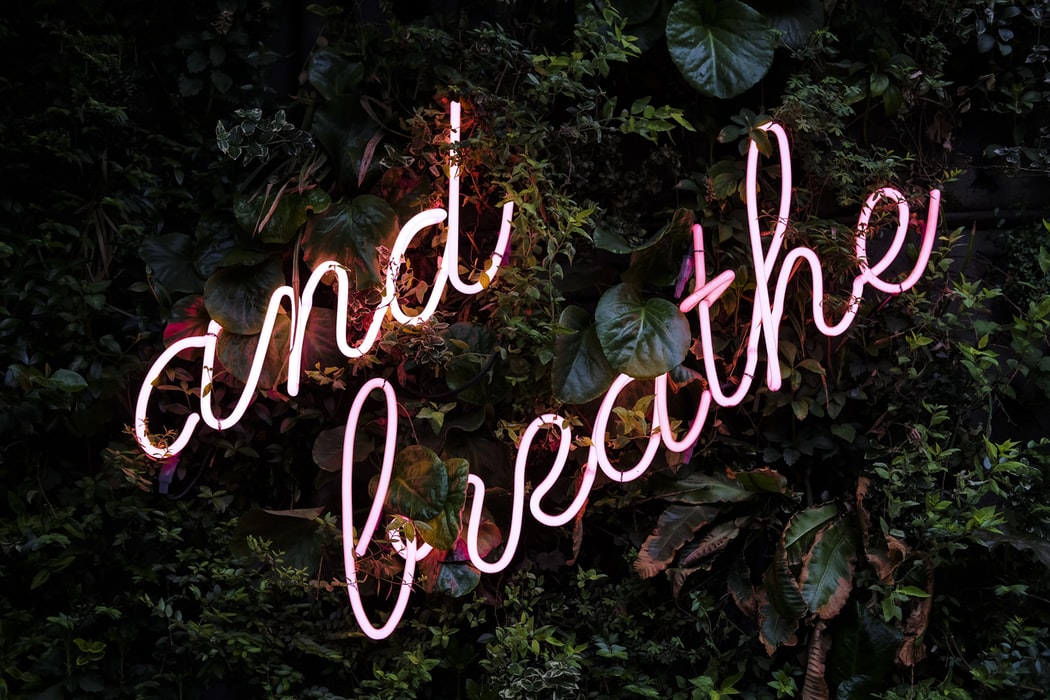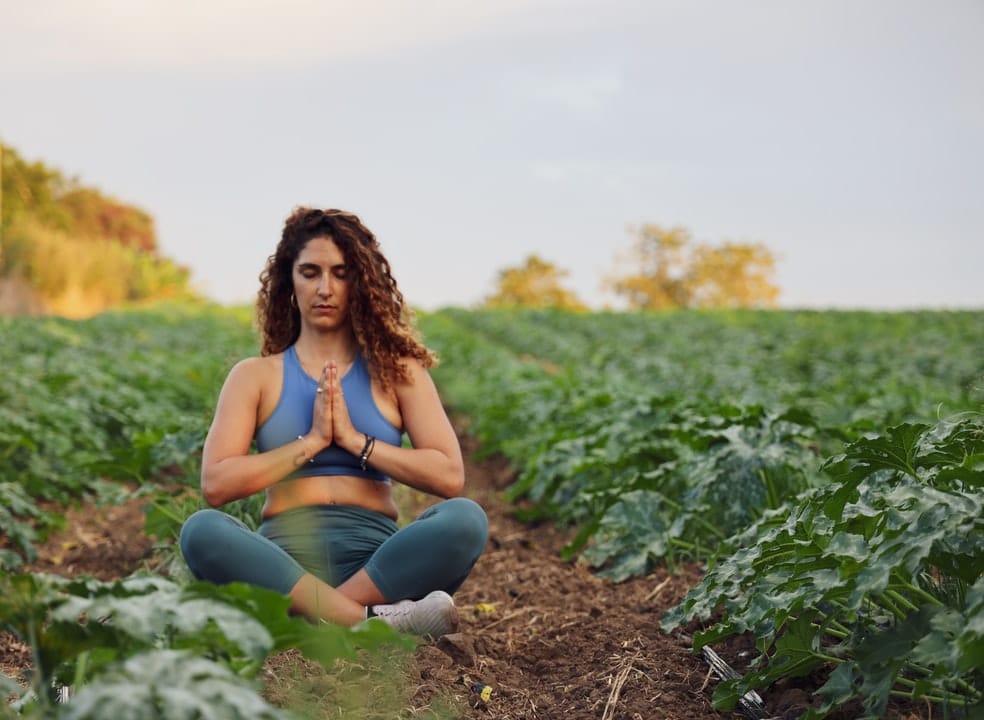By Celestia French
Anyone else like to have an extra tool or two to navigate stressful times? You’re not alone. Below are three simple, easy, and free tools that can help you get out of unease and find peace in the midst of chaos—in less that two minutes each!
To be clear, not all stress is bad, in fact, in some cases it can actually be helpful and even optimize our genetic expression. But, if left unchecked it can have a detrimental affect your physical, mental, and emotional health, and over extended periods of time can be linked to high blood pressure, heart disease, obesity, and other physical ailments. The good news is, there are quite a few simple things that you can do to mitigate your stress that can help calm your mind and bring about a stronger sense of wellbeing.
If you’ve ever practiced yoga or meditation, you might recognize some of these tools. But the fundamental principles of each are also grounded in science, so even if you’re not a yoga practitioner, each is still completely applicable to anyone…even the novice stress buster.
Here’s a bit of context so you can get the most out of these exercises. There’s a part of our nervous system called the autonomic nervous system that regulates many of our bodily functions including heart rate, breathing, digestion, blood pressure, and sexual arousal. Its two branches are called the sympathetic and the parasympathetic nervous systems.
The sympathetic nervous system rules our “fight, flight, or freeze mode” and kicks into high gear when we feel threatened or in danger. Historically, it’s what allowed our ancestors to escape from danger. Meanwhile, the parasympathetic system regulates our “rest and relax” response, which rules our ability to digest, eliminate our bodily waste, and, well, get in the “mood.”
We need both branches to survive and to heal. The problem is, modern life is keeping many of us in fight or flight mode. We are constantly being bombarded by external circumstances that may keep us feeling stressed or worried. Plus, with the advent of technology, our devices are dinging and pinging us with notifications nonstop, further diluting out attention and heightening our already taxed nervous systems. Essentially, we are never getting the opportunity to fully unplug and recharge, allowing our nervous system to find equilibrium.
As a result, we can have an overactive sympathetic nervous system and our bodies and minds don’t have a chance to relax, renew, and adequately repair themselves. So here are three tools to help get out of the cycle of “fight, flight, freeze” and into “rest and relax” mode so that you can find peace, balance, and solace inside yourself…no matter what external circumstances arise.

Tool #1: Feel Better in Your Body: Six Movements of the Spine
Before we begin, please take a moment to tune in with your body. Do you notice if and where you carry tension? Perhaps a tightened jaw, furrowed brow, or the knot in the pit of your stomach? These are all examples of physiological responses that our bodies have to stress. This tool can help you gently ease the physical tension in your body.
The spine houses the central nervous system, and maintaining spinal flexibility helps to support the health of our bodily systems and keep the energy flowing. As you release the tension in your body, so too you’ll start to relieve your stress.
Step 1: Come to a seated position, either in a chair or on the floor or yoga mat. Let your seat feel grounded and supported as you allow your body to come to stillness.
Step 2: Inhale, pulling your collarbone forwarded lifting your face to the sky. Relax your jaw and let your heart feel expansive and open. Then exhale, rolling your shoulders forward. Allow (don’t force!) your shoulder blades to open behind you and relax your shoulders away from your ears. Repeat this for at least five rounds, seeing how slowly and deeply you can breathe with each movement of the spine.
Step 3: Without shrugging your shoulders, reach your right arm down to your right leg and gently lift your left arm up overhead, gently allowing the left side of your body to stretch. Again, be mindful to relax your shoulders away from your ears. If it feels good, you can draw some large circles in the air around you with your left hand and arm for a breath or two. Inhale back to center, then repeat on the other side for a breath or two. Repeat both sides for a total of three to four rounds of side bends.
Step 4: Inhale, lengthening your spine nice and tall. Exhale and gently twist your spine. Place your right hand behind you and your left hand on your right knee if you’d like to gently deepen your twist. Inhale back through center and repeat on the other side, with left hand behind you and right hand on your left knee. Repeat this gentle twisting sequence a total of three to four times.
Come back to center. And give yourself some extra credit (and release additional physical tension) by shrugging and releasing your shoulders a few times, then follow it up with a few gentle neck rolls.

Tool #2 To Calm the Spirit: Three-Part Breath
How we breathe can have a profound effect on the autonomic nervous system. Many of us don’t spend a lot of time focusing our attention on our breath since this bodily function is automatic. But by not paying attention to our breath, we risk missing out on its full benefit. What’s more, how we breathe might actually be keeping our nervous system in a heightened state. This three-part breath is a simple and powerful remedy which can help you to deepen your respiration and get you attuned with your parasympathetic nervous system.
Step 1: Place your hands on your belly. Breathe deeply into your belly, allowing it to expand deeply as you inhale. Exhale completely. Repeat this breathing pattern for at least three cycles of breath to make sure you get the feel of breathing into the depths of your lungs.
Step 2: Place your hands on your ribs, below the sternum, as close to the sides of your ribs as you can reach. Inhale, allowing your ribcage to expand outward and sideways. Exhale and release. Repeat this breathing pattern for at least three cycles of breath to make sure you get the feel of breathing into the middle area of your lungs.
Step 3: Place your hands on your heart. Inhale, feeling just the tops of your lungs expand. See if you can focus your breath at your heart center. Now exhale completely. Repeat this breathing pattern for at least three cycles of breath to get the feel for breathing into the tops of your lungs.
Step 4: Now—and here’s where the magic happens—put all three parts of the breath together. Place one hand on your low belly, and one on your chest. First, inhale deeply into your belly, then into the middle of your lungs, allowing the sides of your ribcage to expand outward. Finally, breathe into the top of your chest around your heart, allowing your lungs to fill to capacity. This sequence should be done in one full inhale. Then exhale the same way: chest, ribs, belly. Repeat this pattern for at least five to ten cycles of breath, and even longer if you can.

Tool #3 To Calm the Spirit: One-Word Mantra
Have you heard the term “mantra?” The word mantra is derived from two Sanskrit words: manas (mind) and tra (tool), so can be translated as “tool of the mind.” And while yogis have been using mantra as a tool to attain deeper states of consciousness for thousands of years, neuroscientists are now able to use brain imaging technology to confirm that the use of mantra is an effective way to calm one’s mental chatter and promote a sense of inner peace.
A variety of specific words and phrases are employed in mantras to create a specific outcome, but science indicates that the practitioner can experience results by repeating any number of words, with deeply focused attention, to experience the benefit. Consistent recitation of the chosen mantra is what gives the practice power. By constantly drawing one’s attention and focus back to the single word or phrase, and allowing the word to resonate within one’s consciousness, the practitioner experiences a deeper—and calmer—state of awareness.
Step 1: Remain seated, or lie down in a comfortable position. (Eventually one could practice a modified version of this while standing or even whilst stuck in traffic, but to experience the full benefit and deep focus, try it seated or lying down first.)
Step 2: Choose your word or phrase. Some effective words to try could be “peace,” “calm,” or even “one.” Select a word that feels best to you.
Step 3: Silently repeat the mantra in your mind, once on each inhalation, then again on the exhalation, over and over again. Remember to allow your breath to remain deep and slow. Repeat this process for two minutes, or up to ten.
Step 4: Allow yourself to bask in the peacefulness and calm that you’ve created for yourself.
Putting it all Together
Remember, each of the aforementioned tools can be used individually or as a triple-whammy stress reliever. There is so much power in knowing that you don’t have to look outside yourself for tools and strategies to cope with life’s stressors. You are equipped to free yourself from whatever is trying to sabotage your peace of mind, whether it’s internal forces like negative thought patterns or self-limiting beliefs, or external stressors like people or events that agitate you. Anytime you are feeling off-center, anxious, or overwhelmed, remember that you have the power to tame your tension and return to a sense of peace.
Sources:
https://www.ncbi.nlm.nih.gov/books/NBK553141/
https://www.healthline.com/health/pranayama-benefits
https://positivepsychology.com/neuroplasticity/
https://www.ncbi.nlm.nih.gov/pmc/articles/PMC6488487/
https://www.bensonhenryinstitute.org

Celestia French is a writer, certified holistic wellness coach, yoga therapist, and work-from-home mother of two young children, who specializes in integrative vitality and productivity optimization. Visit www.celestiafrench.com for more tips to streamline your life and optimize your self care so you can live your most vibrant and productive life.
Find Celestia on Instagram or listen to her podcast here.
